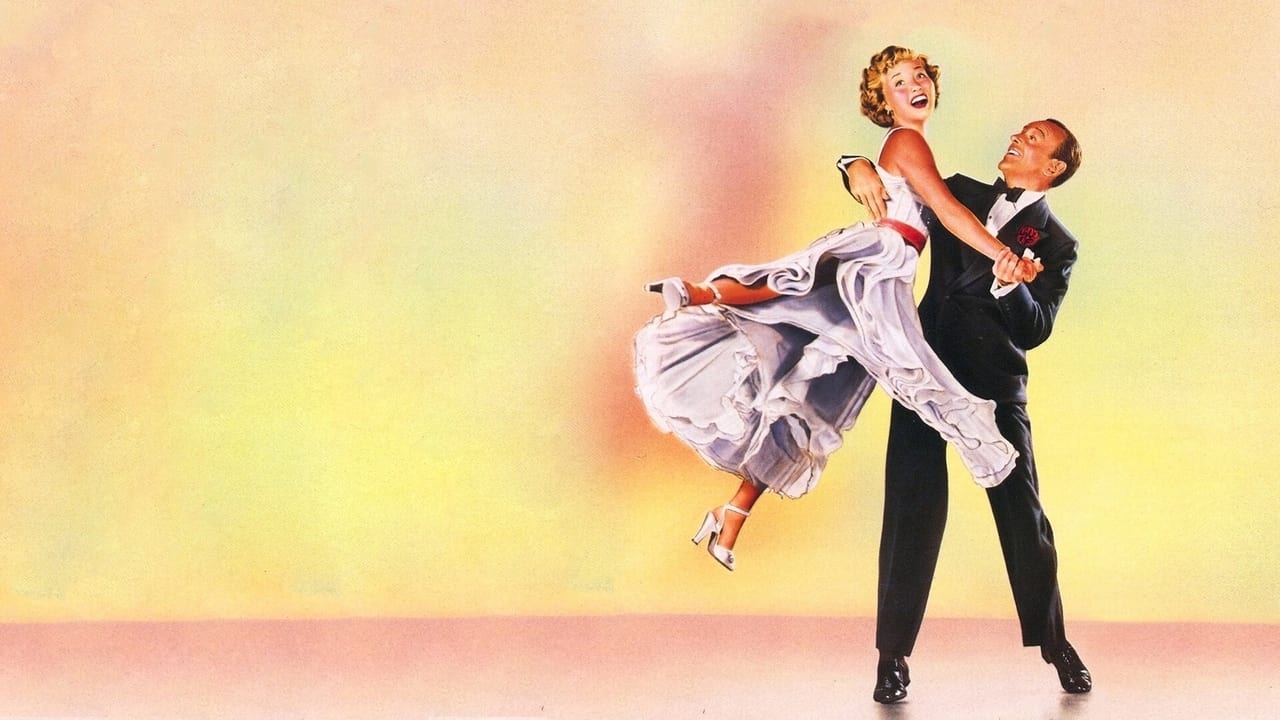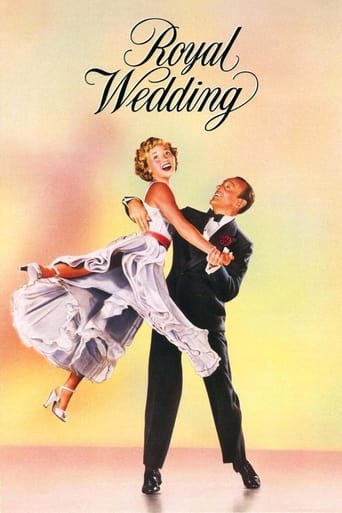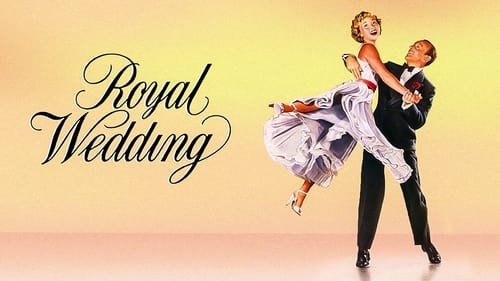



Boring, long, and too preachy.
A different way of telling a story
I really wanted to like this movie. I feel terribly cynical trashing it, and that's why I'm giving it a middling 5. Actually, I'm giving it a 5 because there were some superb performances.
View MoreThis movie feels like it was made purely to piss off people who want good shows
View MoreThis is a movie loosely based on Fred Astaire and his sister who used to dance with Fred until she married royalty. Jane plays his sister in the movie. It is believable to me even though Fred was in his 50's and Jane was 21. Fred and Jane basically tour the world and entertain with their song and dance. Fred does some of the most memorable dances as a solo act in the film. He does the dance with the wooden coat rack. He also does my all time favorite where he dances on all sides of a room. He and Jane do a couple of really original song and dance scenes. The first one is where they sing and dance on a ship as it goes thru a storm. They slip and slide around in an entertaining scene. This scene actually happened to Fred and his real life sister. They also do a funny vaudeville-like scene where they stomp on each other. Winston Churchill's daughter plays Fred's love interest and Peter Lawford plays Jane's. Keenan Wynn is his usual funny self in a dual role.
View MoreI'll wager that most people track down 'Royal Wedding (1951)' solely for the scene in which Fred Astaire tap-dances across the walls and ceiling of his apartment, and it's a fantastic moment, the art of dance utilised – not as a simple stage performance – but for purely cinematic purposes, a distortion of space and reality. But Stanley Donen's film is more than a one-trick pony. 'Royal Wedding' boasts a number of enjoyable musical numbers, some played as conventional stage acts performed by the characters, and others – far more interesting, in my view – employing cinematic technique to produce musical numbers that would be nearly impossible to replicate onstage. Unfortunately, the exuberance of the songs is offset considerably by the lack of any interesting narrative, and a cast that (aside from Astaire, and Keenan Wynn as transatlantic twin brothers) is for the most part inconsequential and barely likable. Perhaps the mere notion of a "royal wedding" was then considered so exciting that sentiment alone was expected to substitute for a good story. Luckily, Donen's follow-up film, which I don't need to name, corrected this mistake.'Royal Wedding' follows the romantic exploits of brother-and-sister dancing team Tom and Ellen Bowen (Astaire and Jane Powell), both of whom have so far resisted all inclinations towards marriage and settling down, despite – in the lady's case, at least – no shortage of willing suitors. Notwithstanding the age gap between the pair, the film's story echoes Astaire's own vaudeville travels with sister Adele, who in 1932 retired from dancing to marry Lord Charles Cavendish. While serial sweetheart Ellen falls for a smooth-talking aristocrat (Peter Lawford), Tom rethinks his stance on love and marriage when he meets British dancer Anne (Sarah Churchill, daughter of Winston), who despite a colourless personality is at least closer to Astaire's age bracket than most of the leading ladies in his autumn years. Keenan Wynn, a funny supporting actor who I recently noticed in 'Song of the Thin Man (1947),' has a quaint double-role as two twins on the opposite side of the Atlantic, each of whom can't understand the regional slang of his sibling. Albert Sharpe plays a proud working-class British gent, the sort of role generally reserved for Stanley Holloway.The film's most interesting musical numbers are those that toy with reality. During "Open Your Eyes," Astaire and Powell attempt to dance as their ship veers into choppy waters, and are frequently tossed about by the shifting inertia. Only when his character finds happiness in love, however, is Astaire able to master gravity itself, tappin' all over the walls and ceiling to "You're All the World to Me" with complete, blissful abandon. Though Astaire's dances occasionally strayed from reality – the "Puttin' on the Ritz" clones in 'Blue Skies (1946), ' the animated shoes in 'The Barkleys of Broadway (1949)' – never before (due largely to a contractual stipulation regarding how Astaire could be filmed) had the mechanics of dance been so joyously thrown on their head. The sequence was created by mounting a camera and its operator on a rotating set (a technique later used by Stanley Kubrick in '2001: A Space Odyssey (1968)'), and, aside from the technical ingenuity, it's a testament to Astaire's talents that he's even able to keep his feet as the ground under him continually shifted 360 degrees.
View MoreThis just misses the Olypic Gold because despite Fred Astaire being on top of his game he is lumbered with an inept leading lady and a wooden 'second' leading man. On the other hand Alan Jay Lerner and Burton Lane (later to team again on the Broadway Show On A Clear Day You Can See Forever) deliver a standout score including all-time Great ballad Too Late Now totally thrown away on Jane Powell, an an equally Great 'patter' number in How Could You Believe Me When I Said I Loved You When You Know I've Been A Liar All My Life.The plot is wafer-thin and based loosely on Astaire's real life early partnership with his sister Adele, who actually did marry into the British peerage, and feature's a brother-sister song and dance team who travel to England at the time of the Royal Wedding, meet new partners and heigh-ho. If Sarah Churchill and Peter Lawford were passengers the compensations outweigh the cost of the freight in the shape of Astaire's two all-time great dance sequences first in the gym and later on the walls and ceiling of his London apartment. These sequences alone put this in the ten-star category and make it a Must for Astaire devotees.
View MoreMusicals sort of blend into a blur, especially those built around Fred Astair. All the stories are disposable, and you remember them more or less by who his partner was.This one is different. I does stick to the mature template of how the dances fit in: half the dances are part of a show within a show. The other half spring from the story in that fantastic manner we accept as a matter of narrative convention.The dances, though, some of them are pretty darn memorable.To appreciate this, you need to understand the challenge of filming dance. We have the "old" convention in spots here: the camera is in some sort of theater seat and watches a performance on a stage, sometimes a literal stage. There's nothing cinematic about it: you could see the same thing is a live performance.The challenge is in what to do that works with the dance and at the same time leverages cinema, presumably to engage us. The production team here did some rather amazing things with space. I don't know who to credit, but there's some genius here.The idea is by steps bonding the dance to notions of artificial space, the actual containing space. It starts with a simple device: Fred dancing with a hat rack. Its a strange thing, halfway between being a partner and an interaction with the world.Then on a ship, he and Jane dance on a floor that shifts. The notion of an unstable gravity is a pretty amazing notion because Fred's effects all depend on his relationship to the ground and what's on it. The floor shifts and he accommodates, amid moving pulls, rolling oranges and shifting furniture.Then the most memorable dance sequence shifts this on its head, mastering gravity: he dances in a room starting on the floor. Then dances on the walls and ceiling. The effect is accomplished by having the room imperceptibly rotate and the camera with it. But its an extraordinary achievement the way he plays with it. It isn't as wild as Gene Kelly playing with and in the rain because it is more precise and intellectual. But it is a real thrill. You need to see it.Later, in the stage show, there's an acknowledgment of all this, a production number about place, with a map of a place that turns transparent to reveal the place itself.+++++++ There's a strange background here, the actual royal wedding of the period. The tone of that was supposed to be so obvious and strong that merely being immersed in it would overcome hesitations to wed. Its so flat today it shocks, especially the actual footage of the rather ridiculous pomp.(The woman playing Fred's paramour is Winston Churchill's daughter, an odd combination of mannish face, red hair, terrific legs, a studied grace and little charm. The man playing the beau of Fred's sister was one of Hollywood's most promiscuous empty souls he married a Kennedy.) Ted's Evaluation -- 3 of 3: Worth watching.
View More